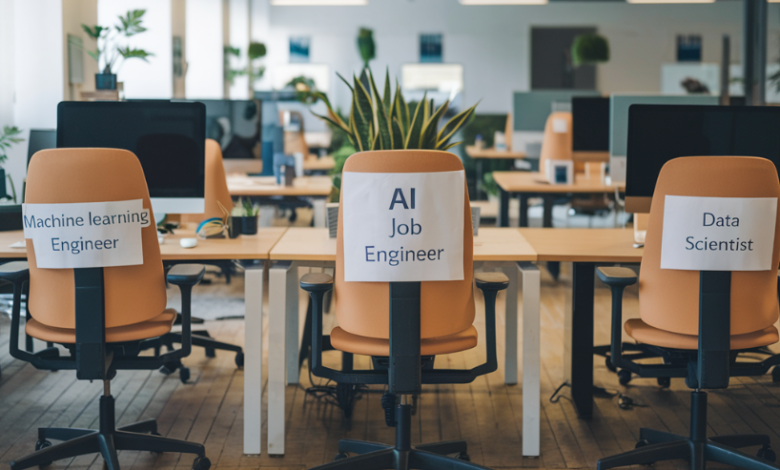
The buzz around AI in business is huge, but we’re facing a real challenge: finding enough people with the right skills to build, manage, and use AI responsibly. Companies are dreaming of automating everything and creating super personalized experiences, but turning those dreams into reality depends on finding talented people. This AI talent shortage affects both technical roles like machine learning engineers and those who understand how to apply AI in specific industries. So, let’s brainstorm some ideas about why this is happening and what we might do about it.
Why the AI Talent Shortage? A Few Possibilities…
Several things could be contributing to the growing gap between the demand for AI skills and the available workforce:
- Technology’s Fast Track: AI is changing so rapidly that it’s tough for education to keep up. Maybe some programs are still teaching older tools and theories, which might not be ideal for cutting-edge areas like generative AI or ethical AI. It’s like trying to learn a new language while it’s still being invented! For example, we’ve seen reports of a big jump in AI-related job postings, but also a lot of people saying they don’t feel confident using AI tools.
- Education Access: A Question of Equity: Perhaps not everyone has the same opportunities to get a good STEAM education. This is something to think about, because it means we might be missing out on a lot of potential talent. We’ve heard stories about businesses struggling to find qualified people, especially for specialized AI roles. And it seems like fewer companies are offering training programs, which could be due to cost or maybe just not knowing where to start.
- Diversity: Room for Improvement: It’s possible that women and minorities are underrepresented in AI. This is a big issue, because a lack of diverse voices can limit innovation and even lead to biased AI systems. We’ve seen examples of this in the news. Ideally, we’d want everyone to have a chance to shape the future of AI.
What Can We Do? Some Ideas to Explore…
Here are some possibilities for tackling this talent shortage:
- Investing in People:
- Internal Training: Maybe companies could offer more courses, certifications, and hands-on projects to help their current employees learn AI.
- Apprenticeships: Apprenticeships could be a great way to build skills on the job. We’ve seen some success stories with this approach. And perhaps partnerships between organizations could offer free AI training, especially for groups that are underrepresented in tech.
- Second Chance Hiring: Let’s not forget about the potential of second-chance hiring! People who have faced challenges in the past often bring unique perspectives and resilience. Giving them a chance to learn AI skills could be a win-win.
- Education and Collaboration:
- Updating Curricula: Maybe universities could work with companies to make sure their courses cover the latest AI topics, including ethics and data governance.
- Flexible Learning Options: Platforms that help match skills to job needs could be really helpful for people looking to upskill or reskill.
- Building a More Inclusive AI Community:
- Fair Hiring Practices: Tools that help reduce bias in hiring could be a game-changer.
- Outreach and Mentorship: Connecting with underrepresented communities could help us find and nurture more talent.
- Using AI to Solve the Problem:
- Skills Tracking: AI-powered tools could help identify skill gaps and suggest personalized learning.
- Workforce Planning: AI could even help predict future talent needs, so companies can be prepared.
Looking Ahead: A Collaborative Effort
The AI talent gap is a complex issue, and it’s not going to be solved overnight. But by working together and exploring these ideas – including the often-overlooked potential of second-chance hiring – we can hopefully move in the right direction. Maybe some key steps could include:
- Thinking about allocating a portion of AI budgets to training and development.
- Exploring ways for governments and organizations to support vocational training and apprenticeships.
- Looking into AI-driven tools for personalized learning.
As the saying goes, “Don’t wait for the perfect candidate; invest in developing potential.” By prioritizing talent development and recognizing the untapped abilities within our existing workforce, we can cultivate a robust pipeline of AI professionals. This commitment to nurturing talent might not only addresses current AI talent shortages but also pave the way for sustained economic growth and innovation in the AI sector.



